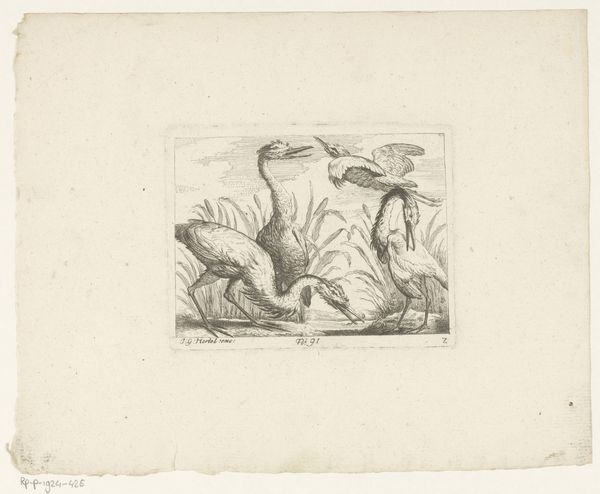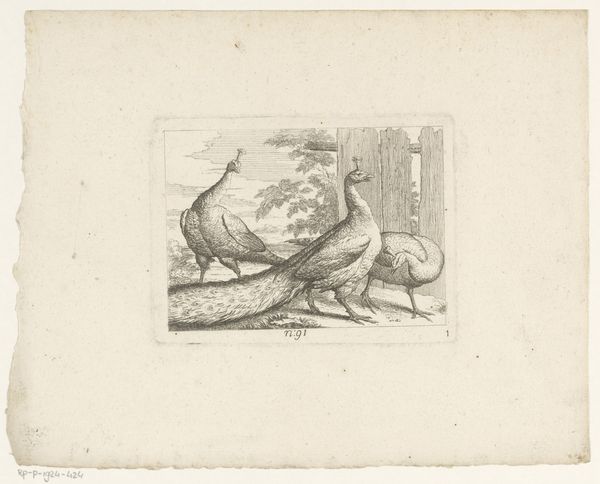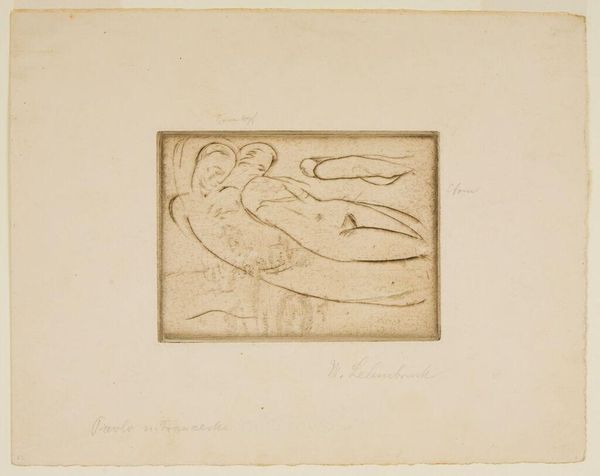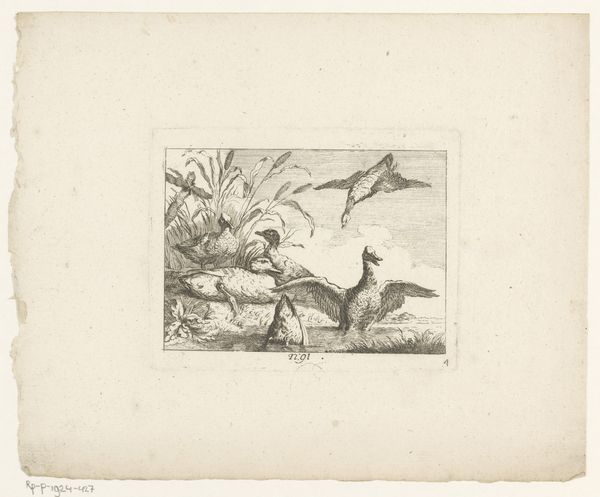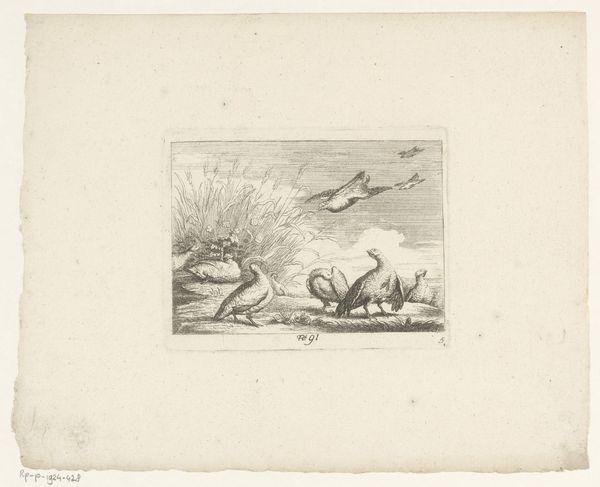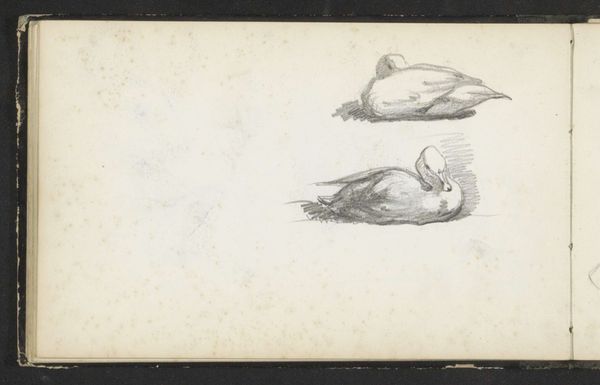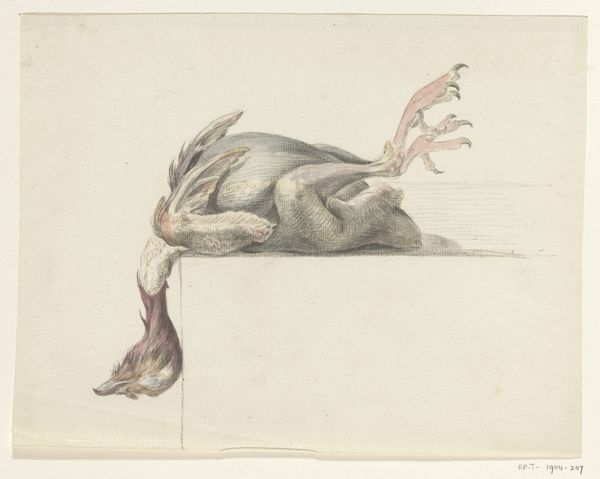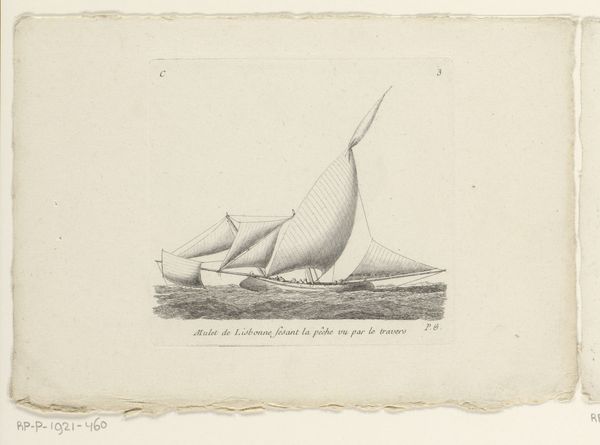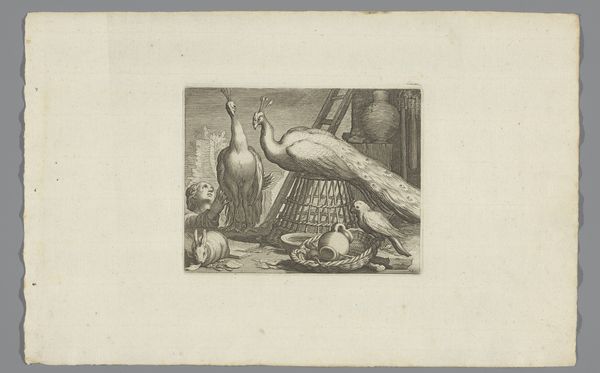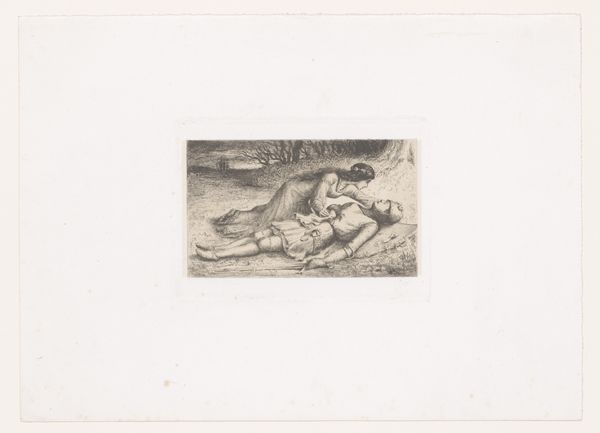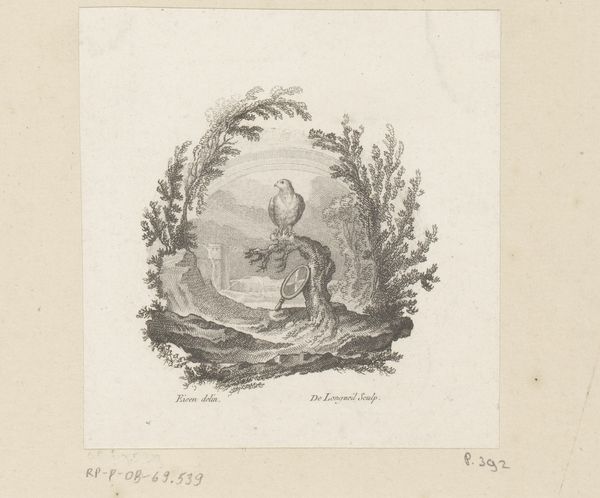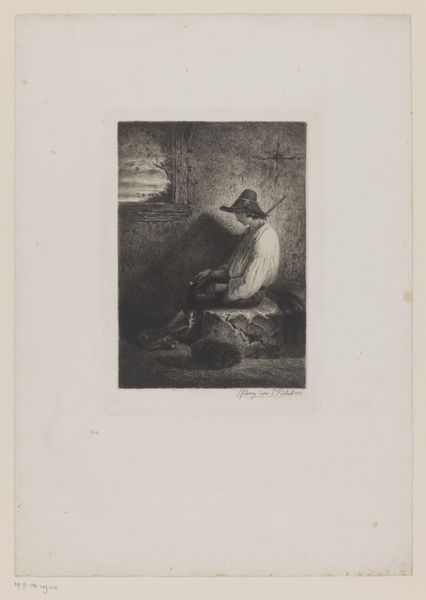
print, engraving
# print
#
landscape
#
engraving
#
realism
Dimensions: height 102 mm, width 135 mm
Copyright: Rijks Museum: Open Domain
Johann Georg Hertel made this landscape with two geese using etching, sometime in the 18th century. Etching is an printmaking technique that relies on the corrosive properties of acid to create an image on a metal plate, which is then inked and printed onto paper. First, a metal plate, often copper, is coated with a waxy, acid-resistant substance called the ground. The artist then scratches through this ground with a needle, exposing the metal beneath. When the plate is immersed in acid, the exposed metal is eaten away, creating incised lines. The longer the plate is left in the acid, the deeper and wider the lines become, allowing for control over the tonal range of the final print. After the etching process, the plate is inked, and the surface wiped clean, leaving ink only in the etched lines. Finally, the plate is pressed against a sheet of paper, transferring the ink and creating the print. Consider this laborious, indirect process; Hertel didn't draw the image directly but instead facilitated its emergence through chemistry. Appreciating this process makes us consider the complex relationship between labor, skill, and the final artwork.
Comments
No comments
Be the first to comment and join the conversation on the ultimate creative platform.
